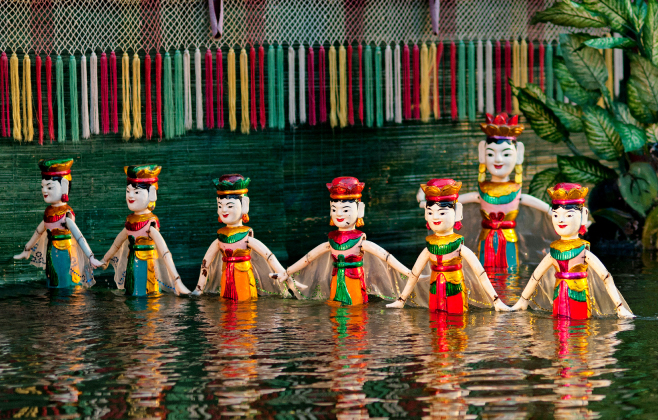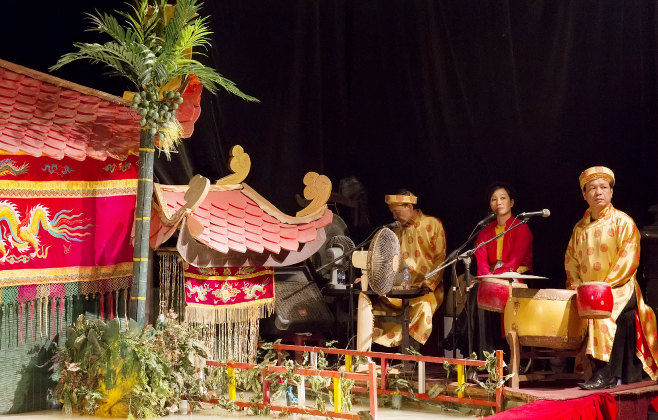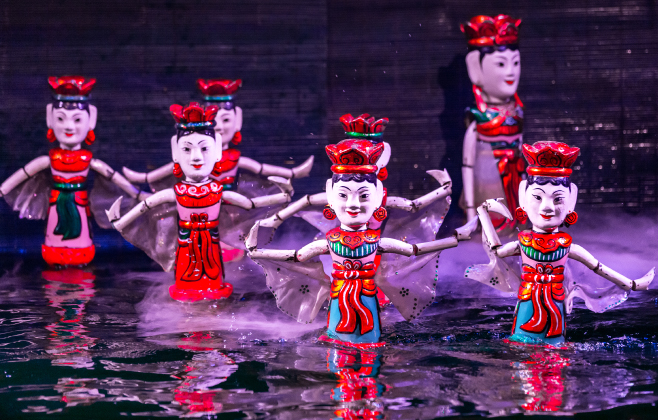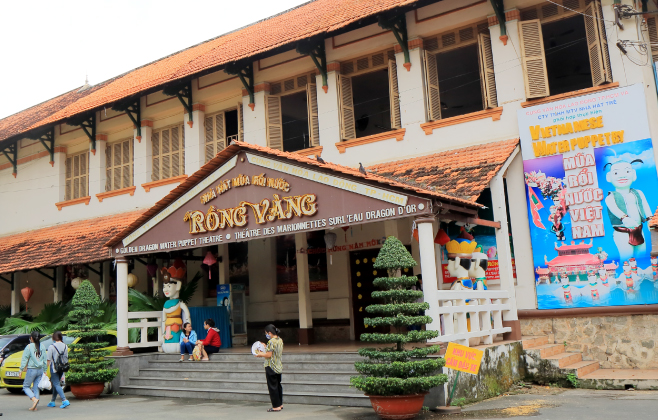Vietnamese Water Puppetry: An Ancient Tradition In A Modern World
Vietnamese water puppetry is an age-old and unique folk art in Vietnam that has undergone a significant transformation from local entertainment to a sophisticated performance staged during festivals. It has been passed down through generations and continues to be a vital part of Vietnamese culture. Unlike shadow puppetry found in other Asian countries, Vietnamese water puppetry is performed in a waist-deep pool of water. It offers an exceptional experience to the audience, showcasing Vietnam's rich customs and culture. As one of the most authentic cultural traits of Vietnam, water puppetry is a must-see for visitors to the country.
History Of Vietnamese Water Puppets
The history of Vietnamese water puppets spans over 4000 years and originated in rice fields where it was initially used to entertain farmers. Water puppetry is a type of traditional folk art that originated in the Red River Delta in Northern Vietnam during the 11th century. Some of the earliest troupes are in Nguyen Xa commune, Dong Hung district, and Thai Binh province. Originally, water puppetry was performed by farmers after the end of the harvest season.
The initial purpose of the puppet shows was to keep spirits amused and away from causing trouble. Simple stages were built around flooded rice paddies, which were prevalent in ancient villages and towns, allowing the art form to develop and spread widely. As time passed, water puppetry became an entertainment activity for the royals, and the shows moved from the rice field to the citadel stages. Today, water puppet shows remain largely unchanged from their origins, with modern performances still using a pool of water as the puppet stage.

History Of Vietnamese Water Puppets
How Does Vietnamese Water Puppet Work?
Setting the stage
Surely when visitors see water puppetry at least once, they will be curious to know “How does Vietnamese water puppetry work?”. Performing Vietnamese water puppets is a physically challenging art form that requires puppeteers to stand in water for the duration of the show, utilizing the water's movement to create tension, enhance the illusion, and narrate a tale. The puppets, which are made of buoyant fig wood and lacquered, are expertly constructed by the puppeteers. The puppeteers adroitly manipulate the puppet's limbs using bamboo sticks and strings. It takes years of practice to reach the degree of proficiency required to become a proficient water puppeteer.
In modern times, water puppet performances in Vietnam are no longer held in flooded rice paddies but rather in specially-designed pools of water. These pools are embellished with red-tiered roofs, flags, and parasols to mimic the look of an altar inside traditional Vietnamese communal houses. Positioned on either side of the stage are the musical ensembles who use their voices and traditional instruments to add life and depth to the stories being told.

Musicians on Vietnamese water puppet show at Golden Dragon Water Puppet Theater
A water puppet show
For centuries, the humble performance style and traditional content of water puppet shows have captivated audiences. These shows often feature scenes depicting the daily life of Vietnamese farmers, including activities such as buffalo tending, fishing, and cultivating. In addition, they showcase communal entertainment events like dragon dancing and swimming contests, as well as historical legends like the story of Le Loi and his return of a precious sword. Some shows may also feature Vietnamese folktales, often with a moral message.
At the beginning of a water puppet show, a humorous introduction of Tễu, a well-known character, is performed. Tễu acts as a lively storyteller and guides the audience through various scenes and stories of the show. Using colorful puppets, the performances recreate scenes of daily life in the northern villages of Vietnam, such as fishing, rice planting, duck herding, boat rowing, and royal parades. The performances are accompanied by a traditional Vietnamese orchestra featuring instruments such as drums, wooden bells, horns, and bamboo flutes. It's worth noting that most of the shows are conducted in Vietnamese.

Traditional Vietnamese performance water puppet theatre show in Hanoi
Where To See Vietnamese Water Puppet Shows?
Thang Long Water Puppet Theatre in Hanoi
Water puppetry is an art form that thrived and gained prominence in the Red River Delta. The Thang Long Water Puppet Theater, which was founded in 1969, is a well-known and prestigious water puppet troupe located in Hanoi. The theater is situated in the northeast corner of Hoan Kiem Lake, which is easily accessible via a 10-minute taxi ride or a 25-minute walk from Hanoi Central Station. The theater offers daily performances, and visitors to Hanoi are encouraged to experience the beauty and excitement of a traditional water puppet show.
Golden Dragon Water Puppet Theatre in Saigon (Ho Chi Minh City)
The most popular water puppet venue in Saigon is Golden Dragon Water Puppet Theatre, located inside a giant sports complex between Tao Dan Park and the Reunification Palace. With a seating capacity of 500-600 people, this theatre is popular among both domestic and foreign tourists. The theatre is also known for its excellent facilities and welcoming atmosphere, making it a must-see attraction for anyone visiting Saigon.

Unidentified people visit the Golden Dragon Water Puppet show.
Hoi An Theater in Hoi An
The heritage town of Hoi An in Vietnam’s Central area – home to a cuisine paradise, the Japanese bridge, and a fantastic Old Town – has its own water puppet show. The theater is conveniently located in the heart of Hoi An's Old Town, making it easily accessible to tourists and locals alike. Besides, The Hoi An Theater operates water puppet shows daily except Wednesdays and Sundays.
Co Do Hue Water Puppet Theatre in Hue
The theatre is located near the historic Citadel and offers daily performances showcasing the ancient art of Vietnamese water puppetry. This theatre occupies up to 160 seats and is situated right in the heart of the city.
In conclusion, the Vietnamese water puppet is an ancient art form that has survived for thousands of years and continues to be performed today. It is a unique and important part of Vietnamese culture that tells stories from the country's rich history and folklore. Although water puppetry faces challenges in the modern world, efforts are being made to preserve and promote this beautiful tradition for future generations to enjoy.
Read more about Top Vietnamese Festivals Travelers Add On The Bucket List
If you're interested in experiencing Vietnamese culture and history in a truly unique way, then attending a water puppetry show should be on your bucket list. It's a mesmerizing and unforgettable experience that you won't find anywhere else in the world. Vietnam Immigration Services hope all travelers can plan their trips after reading this article. If you have any problems or questions about the Vietnam visa, feel free to contact us anytime.
Related Articles
- Grab and Taxi in Vietnam: Best transport options for visitors
- Ha Giang in Vietnam: Breathtaking loops & nature’s majesty
- Bun Cha Hanoi – Authentic Taste of Vietnam’s Iconic Dish
- Custom In Vietnam: A deep dive into Vietnamese traditions
- Retire in Vietnam: The ultimate guide for a dream retirement
- Trang An, Vietnam: A journey through Vietnam's natural wonder
- Vietnam Metro: The future of urban transportation in Vietnam
- Main districts of Ho Chi Minh city: Iconic landmarks & travel map
HOW CAN WE HELP?
APPLY WITH CONFIDENCE










